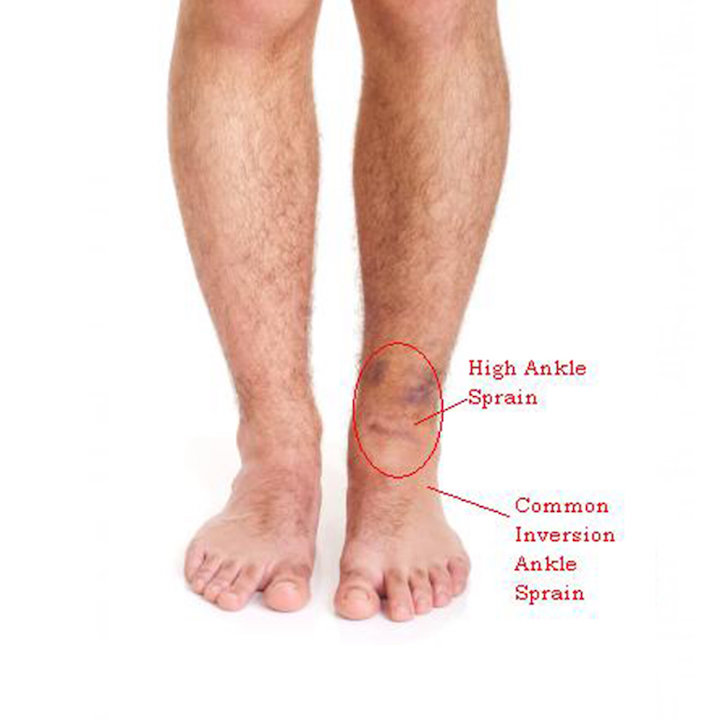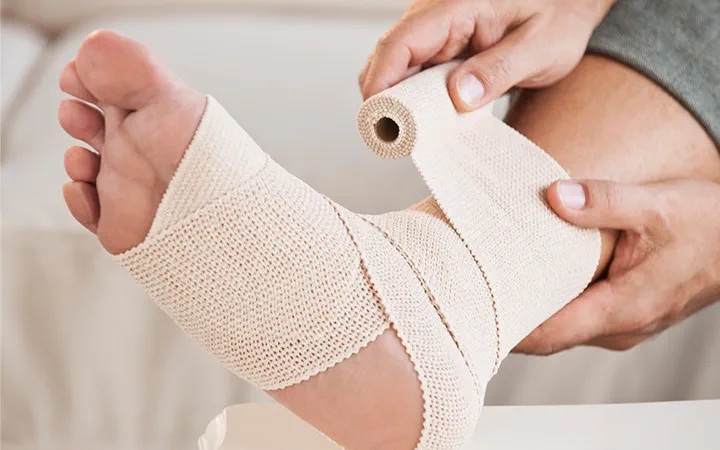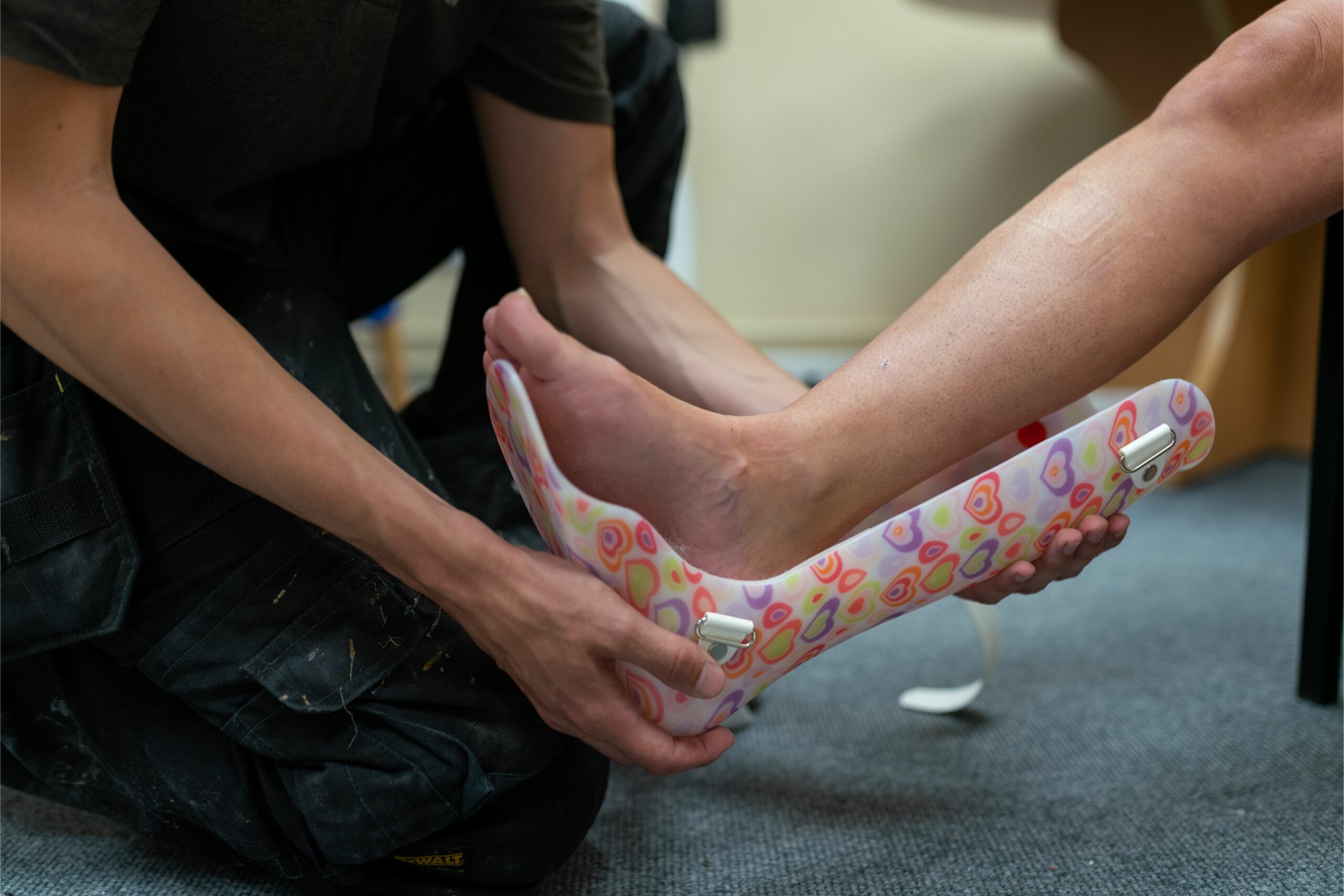Having a high ankle sprain can seriously hinder your mobility and daily activities. This type of injury is more than just an ordinary ankle sprain; it involves the ligaments above the ankle joint.
High ankle sprains have distinct symptoms, such as pain above the ankle, bruising, difficulty bearing weight or walking, and tenderness.
In the wake of a high ankle sprain, one might notice an escalating discomfort above the ankle. This pain typically arises from damaged ligaments positioned higher than those affected in a regular sprain.

Photo Credit: Foot Ankle & Rehabilitation Clinics
Consequently, it encompasses the ankle and the lower part of the leg towards the shin. The severity varies; some people can still walk even with this condition, while others find weight-bearing unbearable.
Bruising is a common symptom of a high ankle sprain. When the ligaments in the ankle are stretched or torn, it can cause small blood vessels to break and result in bruising. The area around the ankle may appear discoloured, with shades of blue, purple, or yellow. This discolouration indicates internal bleeding due to the injury.
Bruising associated with a high ankle sprain usually occurs along the foot’s outer side and may extend upwards towards the leg. It typically develops within a few hours or days after sustaining an ankle sprain.
The severity of bruising can vary depending on how severe and extensive the ligament damage is.
Difficulty bearing weight or walking is a common symptom of a high ankle sprain, caused by the injury to the ligaments above the ankle joint. When you have a high ankle sprain, putting pressure on your foot can be extremely painful and may result in instability.
Walking becomes challenging as you struggle to support your body weight on the affected leg. The ankle pain and discomfort experienced during weight-bearing activities make performing everyday tasks or engaging in physical activities difficult.
Tenderness is a common symptom experienced with high ankle sprains. When the ligaments above the ankle joint are stretched or torn, it can result in pain and tenderness in that area.
This tenderness is often noticed when touching or pressing on the affected area, making it sensitive to pressure. It’s important to be cautious and avoid putting excessive force on the ankle as this can exacerbate the tenderness and delay the healing process.
High ankle sprains are commonly caused by syndesmotic injuries involving the ligaments above the ankle joint. Treatment options include non-operative methods such as R.I.C.E., rehabilitation exercises, ankle taping or braces.
In severe cases, surgery may be necessary. Learn more about high ankle sprains and how to prevent them.
A syndesmotic injury, or a high ankle sprain, occurs when the ligaments connecting the tibia (shinbone) and fibula (calf bone) are stretched or torn. Unlike a typical ankle sprain that affects the ligaments on the outside of the ankle joint, a syndesmotic injury involves the ligaments above the ankle joint.
Commonly caused by sudden twisting or rotational movements of the foot during sports activities or falls, syndesmotic injuries can lead to significant pain and discomfort. In addition to pain above the ankle, other symptoms may include bruising, difficulty bearing weight or walking, and tenderness.

Photo Credit: Oleksandr Osipov, Shutterstock
Diagnosing a syndesmotic injury requires careful examination by a healthcare professional. They may perform specific tests, such as the squeeze test, to determine if there is any instability in that area.
Treatment options for high ankle sprains typically start with non-operative approaches like rest, ice therapy, compression bandages, and elevation (R.I.C.E.).
Rehabilitation exercises are essential in restoring strength and stability to the injured joints after initial healing. Surgery may be necessary in more severe cases where there is significant instability or failure to respond to conservative treatment methods.
To prevent syndesmotic injuries from occurring or recurring in athletes and active individuals alike:
– Ensure proper warm-up before engaging in physical activities.
– Wear properly fitting shoes for adequate support.
Diagnosing a high ankle sprain typically involves a thorough physical examination and possibly some imaging tests. The healthcare provider will carefully assess the area above the ankle for tenderness, swelling, or bruising.
They may also perform specific tests like the squeeze test or external rotation stress test to evaluate the stability of the syndesmosis (the ligaments connecting the tibia and fibula).
X-rays are commonly used to rule out any fractures or dislocations in the ankle joint. In some cases, additional imaging studies such as magnetic resonance imaging (MRI) or ultrasound scans may be recommended to provide more detailed information about soft tissue damage.
Non-operative treatment options for high ankle sprains focus on reducing pain and inflammation and promoting the healing process. Rest plays a vital role in allowing the injured ligaments to repair themselves.
The R.I.C.E. method – Rest, Ice, Compression, and Elevation – is commonly recommended during the initial stages of treatment. Applying ice packs for 15-20 minutes every few hours can help reduce swelling and relieve pain.

Photo Credit: Tetra Images, Alamy
Compression with an elastic bandage or brace helps support and stability the ankle joint while minimising swelling. Elevating the affected leg above heart level can also aid in decreasing swelling by improving blood flow.
Additionally, physiotherapy exercises are crucial for strengthening the muscles around the ankle joint and restoring its full functionality. These exercises may include a range of motion exercises, balance training, stretching, and strengthening exercises tailored to individual needs.
The rehabilitation and recovery process for a high ankle sprain involves several stages to regain strength, stability, and mobility in the ankle joint:
In certain cases, surgery may be recommended as a treatment option for high ankle sprains that do not respond to conservative measures. Surgical intervention is generally considered if there is significant ligament damage or if the joint remains unstable after initial non-operative treatments.
During surgery, the damaged ligaments are repaired or reconstructed to restore stability to the ankle joint.
It’s important to note that surgical treatment for high ankle sprains is not always necessary and is typically reserved for severe cases. The decision to undergo surgery will depend on various factors, including the severity of the injury, individual patient characteristics, and professional recommendations from healthcare providers specialising in orthopedics or sports medicine.

Photo Credit: This Is Engineering, Pexels
Preventing high ankle sprains involves several key measures:
These preventive measures can significantly reduce the risk of high ankle sprains and other injuries.
A high ankle sprain often presents with pain above the ankle, difficulty bearing weight, and tenderness. A healthcare professional can confirm the diagnosis with specific tests and examinations.
Walking on a high ankle sprain depends on its severity. While minor sprains may allow some walking, severe sprains can make weight-bearing very painful and can delay recovery.
Treatment for a high ankle sprain starts with non-operative approaches like rest, ice, compression, and elevation (R.I.C.E.). Physical therapy exercises are introduced gradually. Severe cases may require surgical intervention.